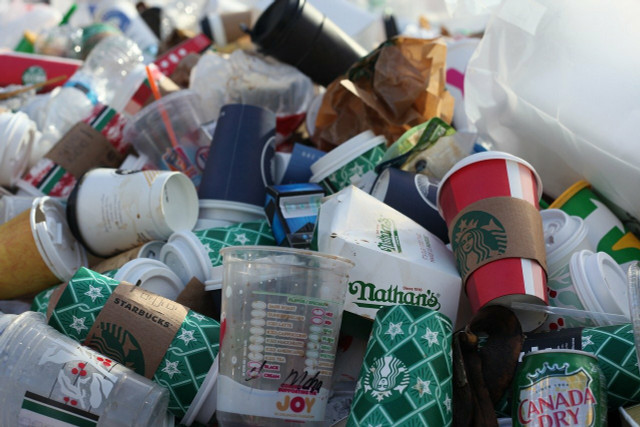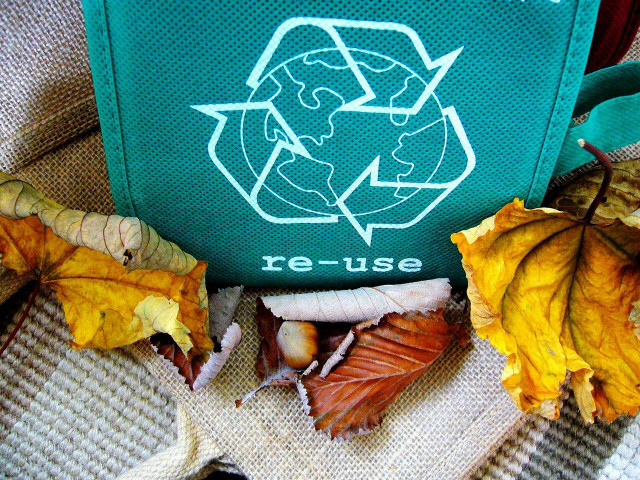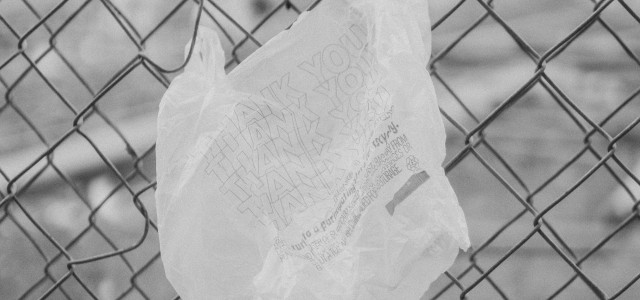Paper is an omnipresent material that we use every single day. Though it is biodegradable and can be used to replace many less sustainable materials, its production requires a hefty amount of precious resources and its lifespan is much shorter than is often suggested. Here are 9 paper-saving tips you can easily implement.
Why We Need to Save Paper

(Foto: CC0 / Pixabay / bones64)
Forests worldwide are in dire condition. From wildfires to droughts, illegal logging, and excessive deforestation, the loss of forests negatively affects wildlife, erodes soil, and significantly contributes to climate change. According to the World Wildlife Fund, over 40 percent of all industrial wood traded globally goes into pulp and paper production. Did you know that the average American uses more than 700 pounds of paper every year? According to the EPA, this is the highest paper usage figure per capita worldwide.
In this article, we’ll offer 9 paper-saving tips that you can easily integrate into your everyday routine.
1. Shop Local
Online shopping may be comfortable but it also produces a lot of packaging waste. If you shop at locally-owned businesses, you can not only save a lot of paper but also save carbon emissions and support independent stores.
2. Avoid Single-Use Foodservice Products



(Foto: CC0 / Pixabay / Filmbetrachter)
Single-use products, whether they are made out of paper, plastic, or other materials, are almost never a good idea. Besides using up precious resources to produce such items (think of the wood used for the production of disposable foodservice products), single-use products create thousands of tons of waste. Contrary to popular belief, disposable paper products used for food and beverages such as paper cups and plates aren’t usually recyclable. For example, paper cups for coffee are often lined with polyethylene to keep them from getting too hot or soggy. Because these materials are difficult to separate during the recycling process, many of these containers end up in landfills rather than paper mills.
While there are some recyclable options out there, and many coffee shops now use cups that are at least partially made from recycled materials, chances are you’ll get a regular non-recyclable cup the next time you’re on the go. Why not take a few minutes to drink your cup of coffee or tea from a mug before you leave home, or bring your own reusable cup?
3. Use Less Printing Paper
If you need to print a lot for school or work, for instance, a simple yet effective way to save paper is to see if you can optimize your printing habits:
- Ask yourself how much you really need to print
- Print double-sided, perhaps even two pages per side
- Do test runs before you print large files
Though this may be a no-brainer, perhaps there are still some ways in which you can limit your paper usage by choosing digital modes of communication instead. For instance, can you send an e-mail rather than submitting a printed letter, a report or a form? Are there things you read in print that you could also read digitally?
4. Bring Your Own Bag



(Foto: CC0 / Pixabay / Shirley810)
Besides shopping locally whenever possible and bringing your own bottle or reusable cup, you can also avoid a lot of packaging waste by bringing your own bags to the grocery store. In an attempt to become more sustainable, many stores have switched from plastic to paper bags. While this is generally a positive shift, since paper is biodegradable and much easier to recycle, a lot of energy, chemicals and fertilizer go into the production of paper bags, which means they still have a negative impact on the environment. Moreover, they are less durable than bags made from fabric, for instance, which means you can’t reuse them as often as you would have to outweigh their environmental impact.
Reusable bags made from recycled materials are a much better choice than paper bags because they last longer and you don’t produce as much waste that might end up in nature. However, always make sure to pay attention to production standards and materials.
5. Unsubscribe From Unsolicited Mail
You’ve probably encountered this problem before: you open your mailbox only to find junk mail you didn’t ask for. This can not only be very annoying, but it also means a lot of paper is being produced that will go straight to waste. If you’re looking for paper-saving options, here are a couple of things you can do:
- Put a sticker on your mailbox that indicates that you don’t want to receive any advertising.
- See if you can contact the company that the advertising is from and see if you can unsubscribe from their list.
- Opt-out of prescreened offers of credit and insurance (note the Federal Trade Commission‘s consumer advice).
- Register on the Direct Marketing Association’s website to receive less mail from marketers.
6. Reuse Scrap Paper



(Foto: CC0 / Pixabay / steve_a_johnson)
To conserve paper, try to reuse scrap paper as much as you can! Sound obvious? Perhaps, but how often do you really save paper that you could still use for your grocery list, notes, and other things you jot down on a daily basis? Finding a box or basket that you can collect scrap paper in to use later might help keep you on track.
7. Use Less Gift-Wrapping Paper
Birthdays, holidays, and celebrations of all sorts are with us year-round. While finding the right present, especially one that is meaningful and sustainable can be difficult, but choosing an eco-friendly gift-wrapping option that will save paper is rather easy. Since lots of gift-wrapping products contain plastic and other materials that are mixed in with paper, recycling isn’t always an option.
Here’s what you can do:
- Normalize reusing gift wrapping paper – set an example to show that this has nothing to do with stinginess and everything to do with conscious consumption
- Choose a gift bag rather than wrapping paper, so the next person can easily reuse it.
- Ever heard of Furoshiki? This traditional Japanese method of wrapping presents requires no paper, no tape, and can be reused many times. All you need is a square piece of fabric and a YouTube tutorial on how to tie it and you’re good to go.
- Have you ever thought of using newspapers or old books to wrap presents? Read more here: What to Do With Old Books
8. Borrow Reading Materials Rather Than Buying Them



(Foto: CC0 / Pixabay / EliFrancis)
Who doesn’t love the feeling of holding a well-read book or a paper copy of their favorite magazine in their hands? Don’t worry, you don’t have to go all-digital to save paper on reading materials.
Instead, why not get a library card or start a book swap with a group of friends? This paper-saving tip will not only make your reading experience far more sustainable, you can also save a lot of money and perhaps even find like-minded people to discuss your latest favorite reads with.
9. Say Goodbye to Paper Towels
Paper towels are another single-use paper product that creates a lot of waste and can be easily replaced. Also, used paper towels cannot be recycled because they are often soaked with grease or other substances which contaminate the recycling process. Unused paper towels cannot be recycled because their fibers are too short to be made into new paper. In any case, switching to cotton cloths is a very effective way to save paper.
Read more:
- Aluminum Foil is Recyclable: Here’s How It’s Done
- Are Pizza Boxes Recyclable – Greasy or Not?
- Black Plastics: Why Are They So Bad for the Environment?
Do you like this post?








